Kelham - Part 02 - A Look Inside
w/e 07 August 2016
All of this week's pictures were
taken with a Kodak DX6490
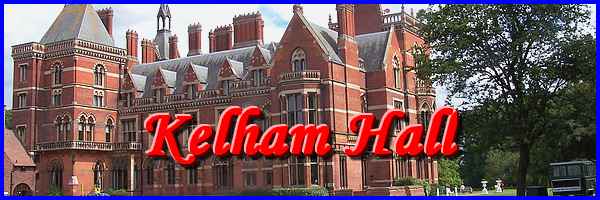
For the guided tour part of our "Day Out"
at Kelham Hall, we assembled with the rest of the group in the
Music Room where we were given an introduction to history of
both the house and the Manners Sutton family.
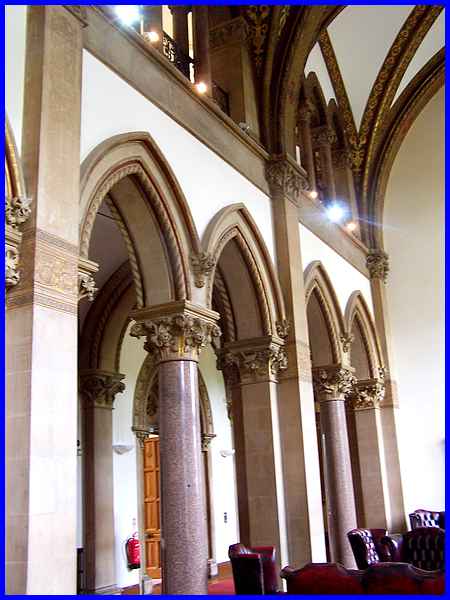
The Gothic Revival architecture of Sir George Gilbert Scott seen
in the outside facades of Kelham Hall continues inside and these
granite pillars and stone arches on one side of the Music Room
are reminiscent of similar constructions that can be found in
churches built in mediaeval times throughout Europe.
|
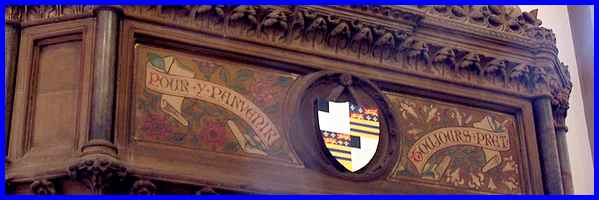
On the opposite wall to the arches the mantle over the fireplace
bears the arms of the Manners Suttons and also their family motto
"Pour y parvenir toujours pret " which can be translated
as "Always ready to achieve".
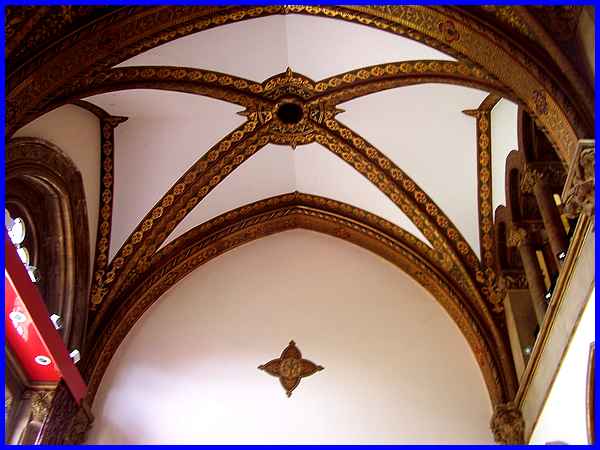
The upper gallery and ceiling are also worthy of note although
the original decorations have at some time in the past been painted
over. Why, when and by whom is unknown but restoration, if at
all possible, would be difficult, time consuming and very costly
so is very unlikely to happen any time soon or at all.
|
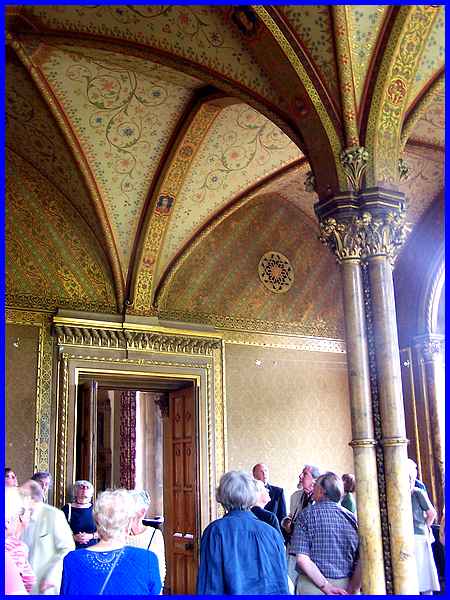
A door from the Music Room leads to the Drawing Room or more
accurately, the Withdrawing Room as it was here that the family
and their guests could withdraw to a quieter place. The decorated
walls and ceiling in here are still original and give an idea
of what the Music Room would originally have looked like.
|
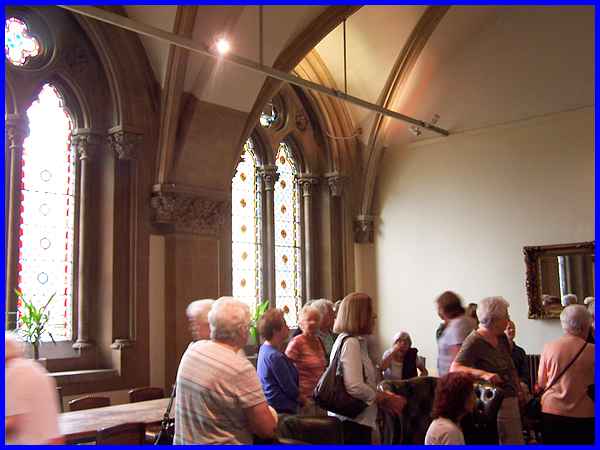
We left the Drawing Room, passed through the Music Room into
the smaller Cedar Room, so named because of the cedar panelled
walls, and then on into the Dining Room which now serves as a
restaurant/bar. We returned to the Music Room again from where
we accessed another smaller room, the Lady Chapel. This would
have been used by the Society of the Sacred Mission who purchased
the Hall from the Manners Sutton family in 1903 to run it as
theological college.
|
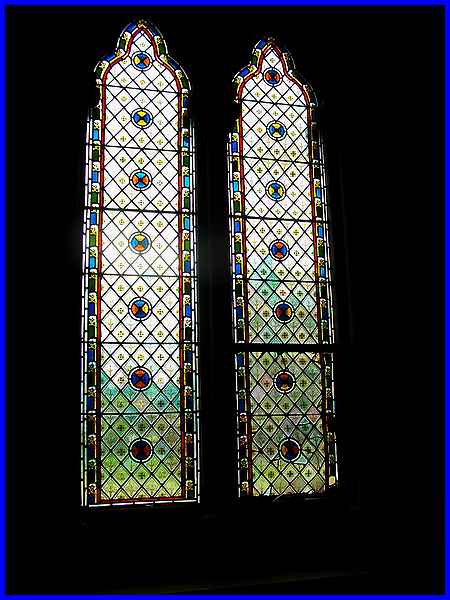
The college closed in 1972 and the chapel was desanctified -
there is now a bar in one corner of the room to cater for functions
at the Hall. The "stained glass" windows still remain
although it transpires that the effect was achieved by means
of transfers stuck on to plain glass.
|
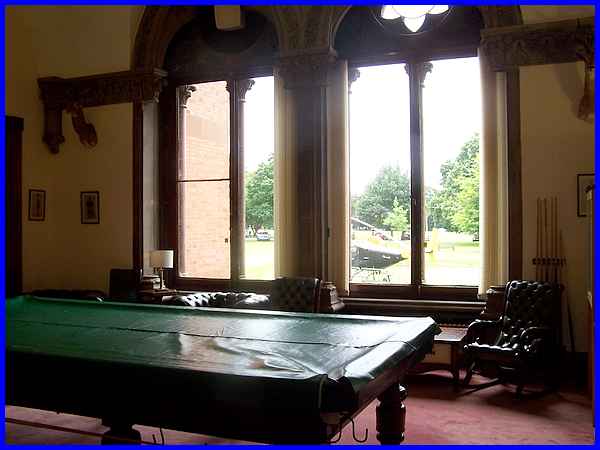
Next to the Lady Chapel and also accessed from the Music Room
is the Billiard Room. This is where we learned that the lawn
outside where the decommissioned helicopter visible through the
windows now stands was the location of tennis courts.
|
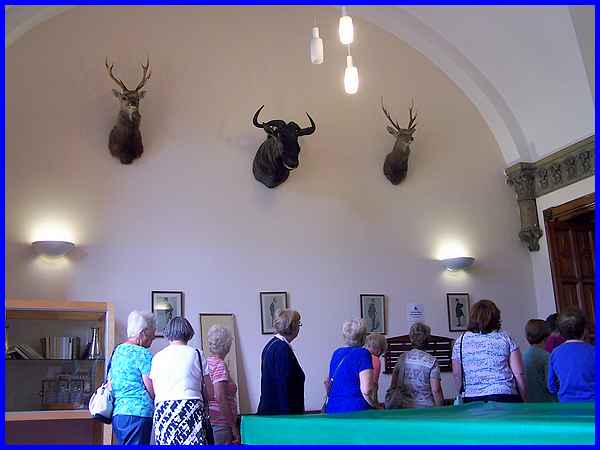
Local villagers can now hire the room to play snooker and billiards
under the sorrowful gaze of several so called "trophies"
killed by members of the Manners Suttion family. The well-to-do
family were connected to the Dukes of Rutland, the Marquess of
Granby, and Viscount Canterbury but ownership of the Hall led
them to bankruptcy and the sale to the Society of the Sacred
Mission, an Anglican Order of Monks. During the period of their
ownership the Hall was occupied twice during both World Wars
by the military and in 1943 American oil workers were based here
in secret to help develop the nearby Eakring oilfield.
|
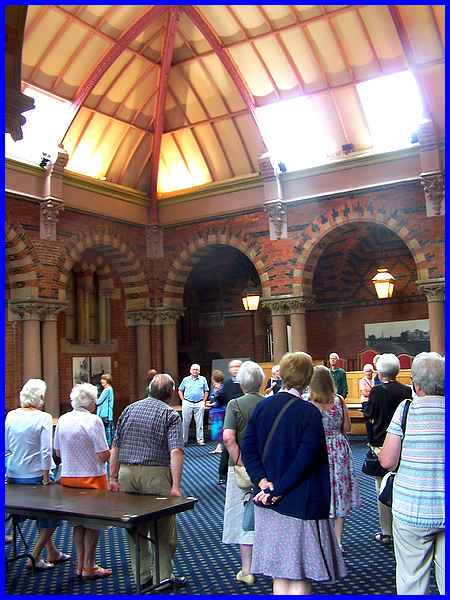
When the Hall was first built, visitors would reach the main
entrance via a courtyard in which their transport would spin
a full half circle to let their passengers alight to enter the
Hall. I've seen procedures like this on TV when coaches and horses
(or cars) arrive back at Buckingham Palace after Royal events
but here at Kelham the glass-covered court has had the doors
replaced by walls and windows to create a large room now used
for wedding receptions and the like.
|
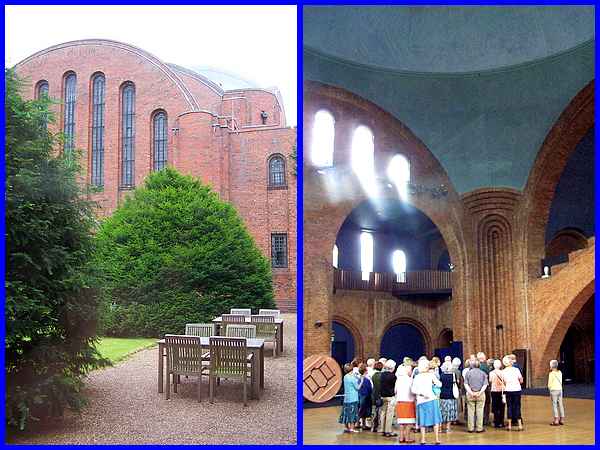
Through the windows however where the doors used to be, the Grade
II listed wing and domed Great Chapel that were added in 1925
can be seen. The main part of Kelham Hall of course is a Grade
I listed building. We made our way into the chapel which boasted
the largest unsupported concrete dome when it was constructed.
The architecture in here differs from the Gothic Revival of Sir
George Gilbert Scott and is in the Byzantine style of the Eastern
Roman Empire. The chapel was dedicated in 1928.
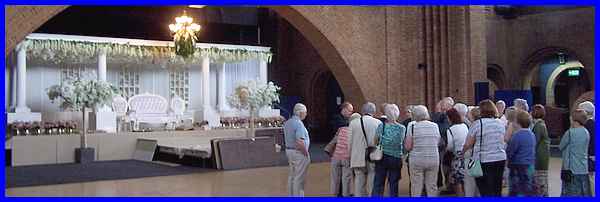
Another feature of the chapel is a flying archway which provides
an ideal setting for Asian wedding ceremonies for which Kelham
Hall has become a popular venue. It also stages traditional weddings
as well as other special events and corporate functions. It was
here that our guided tour came to an end but not before mention
was made of the grounds and St Wilfrid's Church.
|
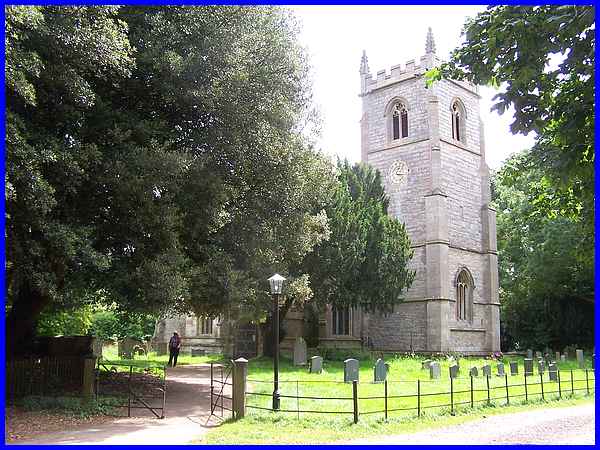
The fourteenth/fifteenth century St Wilfrid’s Church (Grade
I listed) sits a litle distance from the Hall but still within
the Country Park and contains the tomb of Robert Sutton, Lord
Lexington, 1723, the former owner of Kelham Hall. The Park also
has woodland trails, tennis courts and a children’s play
area so there is plenty to do and see to make this an entertaining
and interesting day out for the whole family. If you would like
to know more about it a good place to start is the History Section of the Kelham Hall & Country
Park website.
Back to Part 01
|













